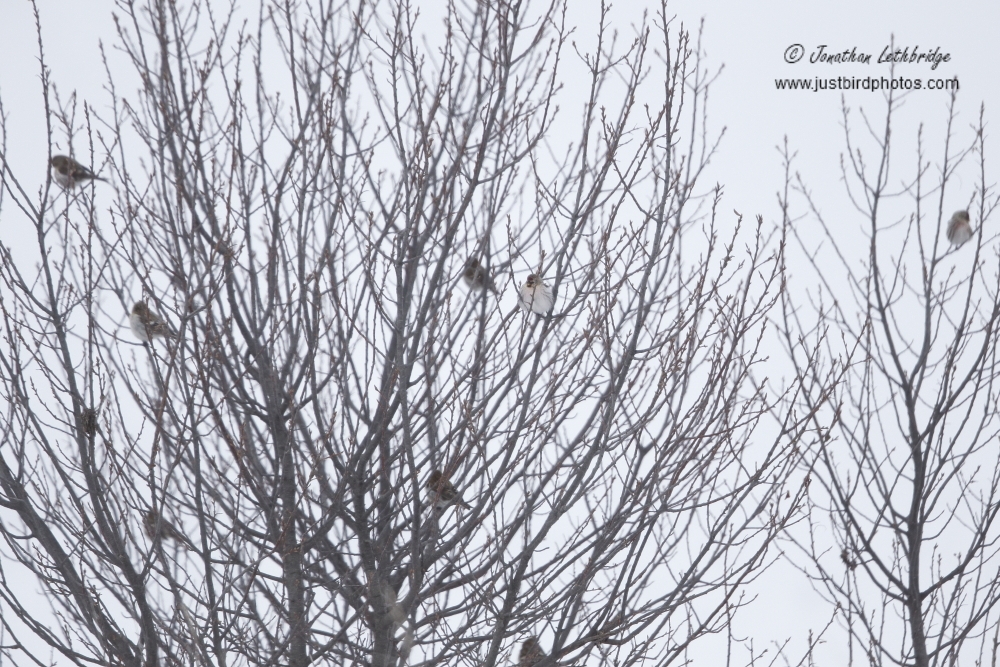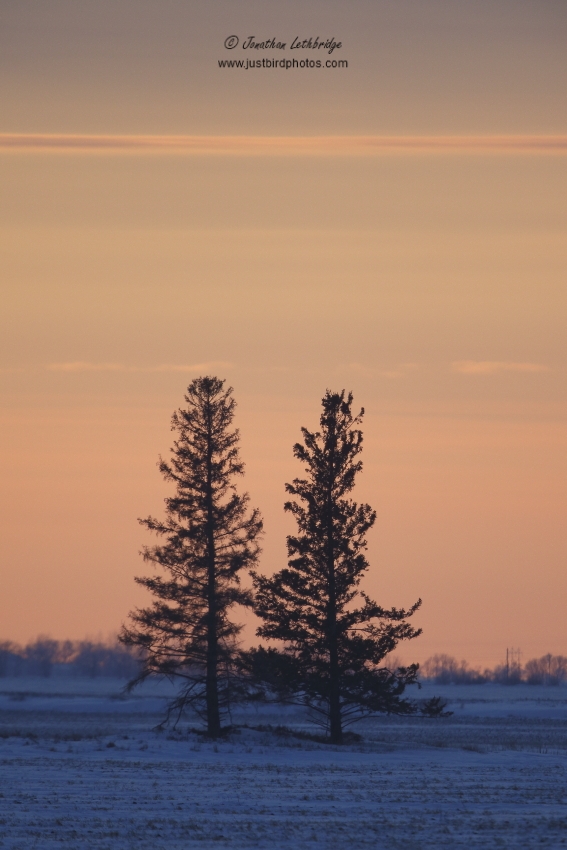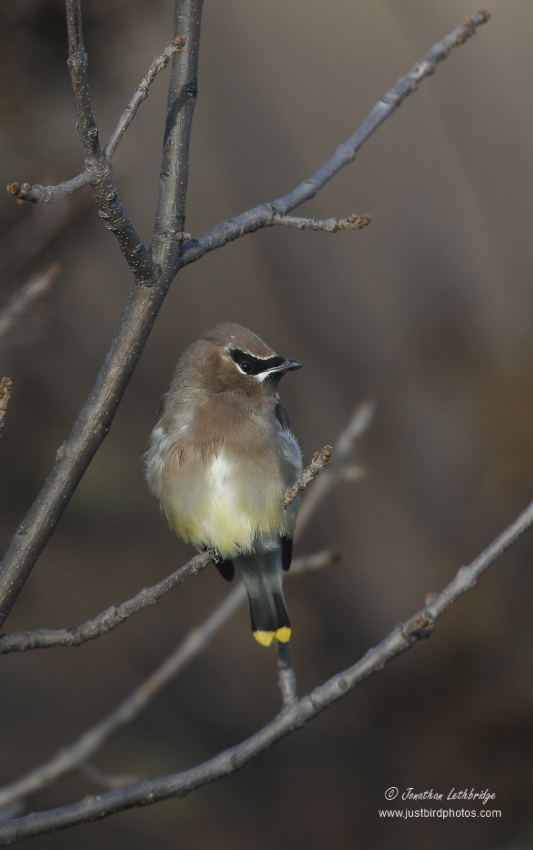Sax Zim Bog. There's a What Three Words for you if ever I saw one. For nearly as long as I have been interested in birding abroad Sax Zim has been one trip away, the stuff of legend. The place you head to in deepest darkest winter for a birding experience like no other. Owls galore, like Finland but on steroids. I got there for first light.
It was not quite as I had imagined it, for a start it is far far bigger than I had thought, and whereas in my mind it was a rabbit warren of tiny back roads where the slightest slip-up would send your car irretrievably deep into an invisible ditch, in fact the roads are hugely wide, regularly ploughed and with easily enough space to stop and park safely pretty much wherever you want. I saw more cars in ditches on Shetland. I should have guessed a lot of this - a driving tour of Sax Zim featured on the Bog website is 70 miles long - you could probably just about do it twice in a day before the light faded.
As I slowed down along Highway 7 I could see I was in the right place, a line of cars neatly along the shoulder, huge lenses on tripods. It was 20 below, only Owls draw people in like this, in this case a Great Grey Owl, suppressed on eBird but freely advertised elsewhere. I've seen this species just once before, on a guided Finnature trip in 2013, and was very much looking forward to a repeat of the experience less the destitution. I popped my scope up and got ready. As it got lighter a shape became visible on a distant pine.... I took some photos but they are terrible. However believe me when I tell you that even on a dull day the views through my scope were magic. What a bird, a privilege to see. It didn't do much, it didn't need to, but as its head rotated and that huge disc seemed to look directly at me I shivered, and not because of the cold. Speaking to a few of the photographers it seemed random as to whether the Owl would hunt right next to the road or stay well out of range - the prior evening it had been mere feet away apparently. The light was decidedly average for photography so I decided against hanging around on the off chance of a repeat, and whilst these guys would likely camp out here all morning I wanted to remain ahead of both my schedule and any other birders as I checked out the myriad of birding spots in the bog - my annotated map had 17 pins on it.
I didn't get far. Before I even reached my first turn-off west into the heart of the area I noticed a small group of cars pulled off the road. Atop a slender pine I could make out a small shape...... was I really this lucky? I was. Northern Hawk Owl, the first of the season, discovered only the previous evening and no doubt brought down by the fearsome weather of the past few days. This is also a species I've seen just once before, as long ago as 2012, and had not really been on my radar at all for this trip. It was of course brilliant, flying loops around the small group of admirers before heading off to survey the landscape from a more distant tree. I'd been birding for half an hour and already added two sensational birds to my trip list, and both new species for America. Whilst watching the Owl I got talking to a birder who at the time I did not realise was actually guiding a photography tour leader, who in turn had two clients with her. His name was Judd and he was finding the birds for the group to photograph - very affable and extremely helpful, he gave me all sorts of gen for the surrounding area including a couple of spots to look for Boreal Chickadee.
 |
| Northern Hawk Owl |
My next stop was the Sax Zim Welcome Centre a short distance away. I recorded both Pileated Woodpecker and Northern Shrike on the road down, and was pleased to then find feeders all over the place and lots of visiting birds. My hunt for the Boreal Chickadee took me away from these however, down a narrow path called Gray Jay Way that heads north into the bog for perhaps half a mile. I was the first person to walk this path for a while I think, and the further I went the deeper the snow became and the harder it got. Through my bins I could see where I was headed, some kind of manmade structure that when I got there turned out to a raised bench overlooking....empty feeders! At least the way back was easier as I could follow my own ploughed trail!
 |
| Pine Grosbeak |
Back at the cabin I could hear soft trilling, and it was not long before a group of Pine Grosbeak descended from the pines to the feeders. I had forgotten how chunky these birds are. Once again this is a species I've seen in Finland, plus a memorable long-distance twitch to Shetland. As I was watching them a group of Two-barred Crossbills flew over, another target bird, so despite no Chickadees (yet!), to say the day was going well at this stage was a huge understatement - this was everything I had hoped for and more!
At Warren Nelson Memorial Bog there is a short boardwalk - a good place from which to try and see Black-backed Woodpecker. No joy for me in a short visit, but once again there was a hive of activity at some feeders with upwards of a dozen Black-capped Chickadees, and both Downy and Hairy Woodpeckers, White-breasted Nuthatches and Common Redpolls. Somewhere in the trees a Wild Turkey called, another unexpected bird that I saw a few more of in some more open areas to the north later in the day.
 |
| Canada Jay |
A short while later, driving carefully along a snow-covered road I saw car parked up and a bird flying over the road - potentially a good sign. I was right - just next to gap in the trees were Judd and his clients, This was the other spot he had told me about for Boreal Chickadee and he beckoned me over. These were his feeders and perches, maintained specifically for his tours, so I had gotten very lucky. His role in the photography operation was to smear peanut-butter into crevices on trunks before it froze solid. The role of the Canada Jays was to fly in as often as possible to leverage out huge chunks of frozen peanut butter and fly off to cache them nearby. The role of the Boreal Chickadees was to try and nab some food when the Canada Jays were not looking, and the role of the photographers was to try and snap some of the frenetic action. I plopped myself into the snow where I would not be in the way of paying customers and joined in - briefly, as I did feel somewhat of an interloper. When I got home I found his contact details and sent him a note thanking him.
 |
| Boreal Chickadee |
The rest of the day was spent exploring the vast expanse of Sax Zim, constantly looking for the missing Woodpecker as well as Ruffed Grouse. Despite several hours of trying the best spots of these there were no sign, in fact there were very few birds at all - the occasional flyover Raven and a couple of Northern Shrikes. The most birdy areas were always at feeders. There are quite a few of these maintained at various points around the bog - the best are on Admiral Road, McDavitt Road, and then also at the north-west corner at Mary Lou's house. She had unfortunately just had some kind of electrical fire which had burned down her garage and killed her chickens, but was still keen to welcome birders right next to the charred remains. I had just missed her regular Evening Grosbeaks, but I did manage to see the Red-bellied Woodpecker, quite a rare bird up here. She was very pleasant, I hope she can get it rebuilt in the spring and get some more chickens.
 |
| Red-bellied Woodpecker |
In the dying light I returned to check up on both Owls - they were both still there, along with plenty of company, but both still some distance away from the road. I had some more scope views and then drove the hour back to Grand Rapids where I dined unenthusiastically on microwaved leftover chicken wings.
An amazing day but I had a problem brewing - more weather. A large winter storm was incoming from the west, driving up the I-90 corridor and expected to severely disrupt travel. In a day and a half it would arrive in Minnesota, coinciding exactly with my planned itinerary. This would not only make birding impossible, but also risked seeing me get stuck on the wrong side of it for my flight home from Chicago. I spent the evening working out what to do. My original plan of Sax Zim again all morning followed by the Grand Marais area in the afternoon and next morning needed to be substituted with a long drive south east instead. I reluctantly cancelled my next two nights in Duluth and Saint Paul respectively, and found a hotel for the next night in mid Wisconsin. I left the following night open to see what would happen, and set the alarm for early. Also on my mind was the new requirement to test negative for Covid no more than 48 hours before my flight home, where exactly was I going to get a test?












































